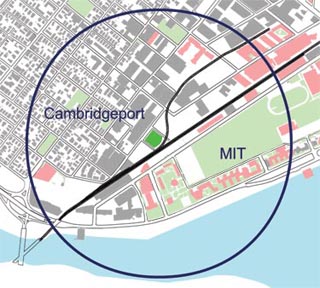Course Description
For many years, Cambridge, MA, as host to two major research universities, has been the scene of debates as to how best to meet the competing expectations of different stakeholders. Where there has been success, it has frequently been the result, at least in part, of inventive urban design proposals and the design and …
For many years, Cambridge, MA, as host to two major research universities, has been the scene of debates as to how best to meet the competing expectations of different stakeholders. Where there has been success, it has frequently been the result, at least in part, of inventive urban design proposals and the design and implementation of new institutional arrangements to accomplish those proposals. Where there has been failure it has often been explained by the inability - or unwillingness - of one stakeholder to accept and accommodate the expectations of another. The two most recent fall Urban Design Studios have examined these issues at a larger scale. In 2001 we looked at the possible patterns for growth and change in Cambridge, UK, as triggered by the plans of Cambridge University. And in 2002 we looked at these same issues along the length of the MIT ‘frontier’ in Cambridge, MA as they related to the development of MIT and the biotech research industry.
In the fall 2003 Urban Design Studio we propose to focus in on an area adjacent to Cambridgeport and the western end of the MIT campus, roughly centered on Fort Washington. Our goal is to discover the ways in which good urban form, an apt mix of activities, and effective institutional mechanisms might all be brought together in ways that respect shared expectations and reconcile competing expectations - perhaps in unexpected and adroit ways.
Course Info
Instructors
Departments
Learning Resource Types











